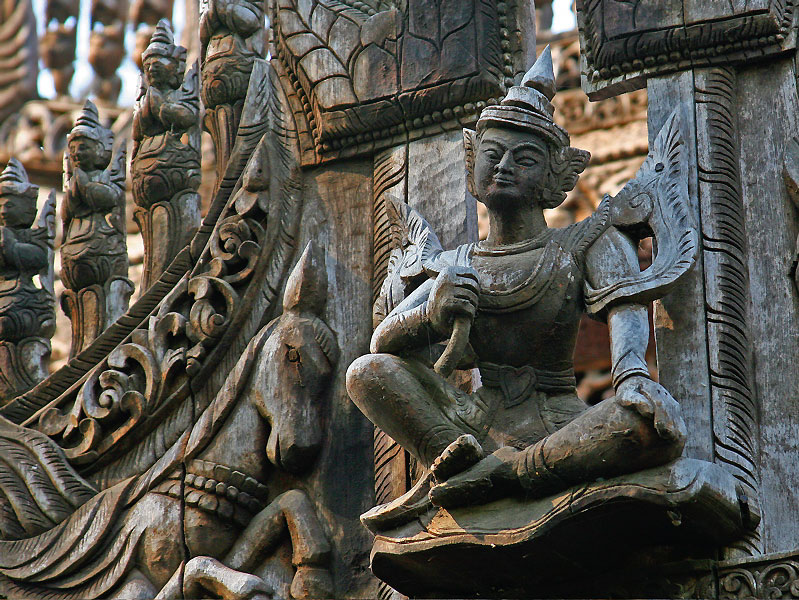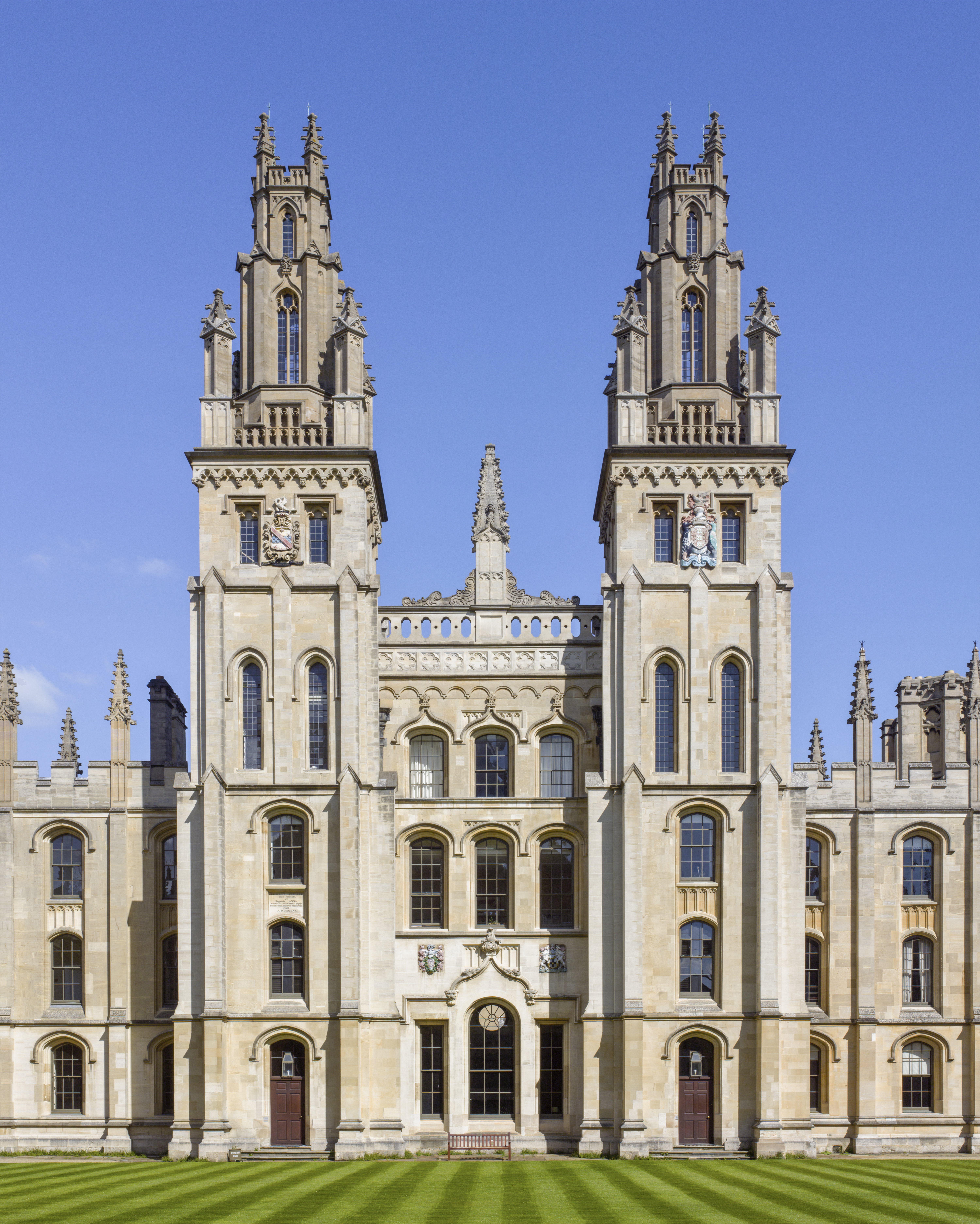|
Myadaung Monastery
Myadaung Monastery ( my, မြတောင်ကျောင်း; also known as the Queen's Monastery) was a Buddhist monastery built in 1885 under the patronage of Queen Supayalat. Myadaung Monastery was located southwest of Mandalay Palace, and was profusely carved and gilded in gold. As a fine specimen of Burmese architecture, its conservation was ordered by Lord Curzon in December 1901. See also *Atumashi Monastery *Shwenandaw Monastery Shwenandaw Monastery (, ; lit. "Golden Palace Monastery") is a historic Buddhist monastery located near Mandalay Hill, Mandalay Region, Myanmar (formerly Burma). Shwenandaw Monastery was built in 1878 by King Thibaw Min, who dismantled and rel ... * Taiktaw Monastery * Salin Monastery * Yaw Mingyi Monastery Notes References * * {{coord missing, Myanmar Monasteries in Myanmar Buddhist temples in Mandalay 19th-century Buddhist temples Religious buildings and structures completed in 1885 ... [...More Info...] [...Related Items...] OR: [Wikipedia] [Google] [Baidu] |
Theravada
''Theravāda'' () ( si, ථේරවාදය, my, ထေရဝါဒ, th, เถรวาท, km, ថេរវាទ, lo, ເຖຣະວາດ, pi, , ) is the most commonly accepted name of Buddhism's oldest existing school. The school's adherents, termed Theravādins, have preserved their version of Gautama Buddha's teaching or ''Dharma (Buddhism), Buddha Dhamma'' in the Pāli Canon for over two millennia. The Pāli Canon is the most complete Buddhist canon surviving in a Indo-Aryan languages, classical Indian language, Pali, Pāli, which serves as the school's sacred language and ''lingua franca''.Crosby, Kate (2013), ''Theravada Buddhism: Continuity, Diversity, and Identity'', p. 2. In contrast to ''Mahāyāna'' and ''Vajrayāna'', Theravāda tends to be conservative in matters of doctrine (''pariyatti'') and monastic discipline (''vinaya''). One element of this conservatism is the fact that Theravāda rejects the authenticity of the Mahayana sutras (which appeared c. ... [...More Info...] [...Related Items...] OR: [Wikipedia] [Google] [Baidu] |
Atumashi Monastery
The Atumashi Monastery ( my, အတုမရှိကျောင်း ; formally Mahā Atulaveyan Kyaungdawgyi or ) is a Buddhist monastery located in Mandalay, Myanmar (Burma). History It was built in 1857 by King Mindon, two years after the capital was moved to Mandalay. The monastery was built at a cost of 500,000 rupees. The original monastery structure was built using teak, covered with stucco on the outside, with its peculiar feature being that it was surmounted by five graduated rectangular terraces instead of the traditional ''pyatthat''s, Burmese-style tiered and spired roofs. The structure burned down in 1890 after a fire in the city destroyed both the monastery and the tall Buddha image, as well as complete sets of the Tipitaka. During the fire, a 19.2-carat (32 ''ratti'') diamond, which adorned the Buddha image (originally given to King Bodawphaya Bodawpaya ( my, ဘိုးတော်ဘုရား, ; th, ปดุง; 11 March 1745 – 5 June 1819) ... [...More Info...] [...Related Items...] OR: [Wikipedia] [Google] [Baidu] |
Buddhist Temples In Mandalay
Buddhism ( , ), also known as Buddha Dharma and Dharmavinaya (), is an Indian religion or philosophical tradition based on teachings attributed to the Buddha. It originated in northern India as a -movement in the 5th century BCE, and gradually spread throughout much of Asia via the Silk Road. It is the world's fourth-largest religion, with over 520 million followers (Buddhists) who comprise seven percent of the global population. The Buddha taught the Middle Way, a path of spiritual development that avoids both extreme asceticism and hedonism. It aims at liberation from clinging and craving to things which are impermanent (), incapable of satisfying ('), and without a lasting essence (), ending the cycle of death and rebirth (). A summary of this path is expressed in the Noble Eightfold Path, a training of the mind with observance of Buddhist ethics and meditation. Other widely observed practices include: monasticism; "taking refuge" in the Buddha, the , and the ; and ... [...More Info...] [...Related Items...] OR: [Wikipedia] [Google] [Baidu] |
Monasteries In Myanmar
A monastery is a building or complex of buildings comprising the domestic quarters and workplaces of monastics Monasticism (from Ancient Greek , , from , , 'alone'), also referred to as monachism, or monkhood, is a religious way of life in which one renounces worldly pursuits to devote oneself fully to spiritual work. Monastic life plays an important role ..., monks or nuns, whether living in Cenobitic monasticism, communities or alone (hermits). A monastery generally includes a place reserved for prayer which may be a chapel, Church (building), church, or temple, and may also serve as an Oratory (worship), oratory, or in the case of Cenobium, communities anything from a single building housing only one senior and two or three junior monks or nuns, to vast complexes and estates housing tens or hundreds. A monastery complex typically comprises a number of buildings which include a church, dormitory, cloister, refectory, library, Wiktionary:balneary, balneary and Hospital, infi ... [...More Info...] [...Related Items...] OR: [Wikipedia] [Google] [Baidu] |
Yaw Mingyi Monastery
Yaw Mingyi Monastery ( my, ယောမင်းကြီးအုတ်ကျောင်း) is a Buddhist monastery in Mandalay, Burma, built in 1866 under the patronage of Pho Hlaing, the Yaw Mingyi. Unlike classic Burmese monasteries, the Yaw Mingyi Monastery was a brick monastery modeled after a hotel the Yaw Mingyi had seen while traveling in Southern Italy, and as such, adopts European flourishes and is extravagantly carved in plaster. It was located near the Salin Monastery. The monastery was burned down all wooden infrastructure, remained only brick structure during World War II during the Allied bombing of Mandalay. See also *Kyaung *Atumashi Monastery *Myadaung Monastery * Salin Monastery *Shwenandaw Monastery Shwenandaw Monastery (, ; lit. "Golden Palace Monastery") is a historic Buddhist monastery located near Mandalay Hill, Mandalay Region, Myanmar (formerly Burma). Shwenandaw Monastery was built in 1878 by King Thibaw Min, who dismantled and reloc ... * Taikta ... [...More Info...] [...Related Items...] OR: [Wikipedia] [Google] [Baidu] |
Salin Monastery
Salin Monastery ( my, စလင်းကျောင်း) is a royal Buddhist monastery in Mandalay, Burma, known for its indigenous wooden carvings. The monastery was built under the patronage of the Salin Princess. Salin Monastery was located north of Mandalay Palace, near the racetrack. See also *Atumashi Monastery *Shwenandaw Monastery Shwenandaw Monastery (, ; lit. "Golden Palace Monastery") is a historic Buddhist monastery located near Mandalay Hill, Mandalay Region, Myanmar (formerly Burma). Shwenandaw Monastery was built in 1878 by King Thibaw Min, who dismantled and rel ... * Myadaung Monastery * Taiktaw Monastery Notes References * * * Tilly, Harry L.; Wood-carving of Burma'' Rangoon 1903 (Gov. Pr., Burma), photographs P. Klier {{Buddhist sites in Myanmar Monasteries in Myanmar Buddhist temples in Mandalay 19th-century Buddhist temples Religious buildings and structures completed in 1859 ... [...More Info...] [...Related Items...] OR: [Wikipedia] [Google] [Baidu] |
Shwenandaw Monastery
Shwenandaw Monastery (, ; lit. "Golden Palace Monastery") is a historic Buddhist monastery located near Mandalay Hill, Mandalay Region, Myanmar (formerly Burma). Shwenandaw Monastery was built in 1878 by King Thibaw Min, who dismantled and relocated the apartment formerly occupied by his father, King Mindon Min, just before Mindon Min's death, at a cost of 120,000 rupees. Thibaw removed the building on 10 October 1878, believing it to be haunted by his father's spirit. The building reconstruction was finished in 31 Oct 1878, dedicated in memory of his father, on a plot adjoining Atumashi Monastery.It is said that King Thibaw used it for meditation, and the meditation couch he sat on can still be seen. The building was originally part of the royal palace at Amarapura, before it was moved to Mandalay, where it formed the northern section of the Hmannan (Glass Palace) and part of the king's royal apartments. The building was heavily gilt with gold and adorned with glass mosaic work. ... [...More Info...] [...Related Items...] OR: [Wikipedia] [Google] [Baidu] |
George Curzon, 1st Marquess Curzon Of Kedleston
George Nathaniel Curzon, 1st Marquess Curzon of Kedleston, (11 January 1859 – 20 March 1925), styled Lord Curzon of Kedleston between 1898 and 1911 and then Earl Curzon of Kedleston between 1911 and 1921, was a British Conservative statesman who served as Viceroy of India from 1899 to 1905. During the First World War, Curzon was Leader of the House of Lords and from December 1916 served in the small War Cabinet of Prime Minister David Lloyd George and in the War Policy Committee. He went on to serve as Secretary of State for Foreign Affairs at the Foreign Office from 1919 to 1924. In 1923, Curzon was a contender for the office of Prime Minister, but Bonar Law and some other leading Conservatives preferred Stanley Baldwin for the office. Early life Curzon was the eldest son and the second of the eleven children of Alfred Curzon, 4th Baron Scarsdale (1831–1916), who was the Rector of Kedleston in Derbyshire. George Curzon's mother was Blanche (1837–1875), the daugh ... [...More Info...] [...Related Items...] OR: [Wikipedia] [Google] [Baidu] |
Buddhism
Buddhism ( , ), also known as Buddha Dharma and Dharmavinaya (), is an Indian religion or philosophical tradition based on teachings attributed to the Buddha. It originated in northern India as a -movement in the 5th century BCE, and gradually spread throughout much of Asia via the Silk Road. It is the world's fourth-largest religion, with over 520 million followers (Buddhists) who comprise seven percent of the global population. The Buddha taught the Middle Way, a path of spiritual development that avoids both extreme asceticism and hedonism. It aims at liberation from clinging and craving to things which are impermanent (), incapable of satisfying ('), and without a lasting essence (), ending the cycle of death and rebirth (). A summary of this path is expressed in the Noble Eightfold Path, a training of the mind with observance of Buddhist ethics and meditation. Other widely observed practices include: monasticism; " taking refuge" in the Buddha, the , and the ; ... [...More Info...] [...Related Items...] OR: [Wikipedia] [Google] [Baidu] |
Mandalay Palace
The Mandalay Palace ( my, မန္တလေး နန်းတော်, ), located in Mandalay, Myanmar, is the last royal palace of the last Burmese monarchy. The palace was constructed between 1857 and 1859 as part of King Mindon's founding of the new royal capital city of Mandalay. The plan of Mandalay Palace largely follows the traditional Burmese palace design – it is inside a walled fort surrounded by a moat. The palace itself is at the centre of the citadel and faces east. All buildings of the palace are of one storey in height. The number of spires above a building indicated the importance of the area below. Mandalay Palace was the primary royal residence of King Mindon and King Thibaw, the last two kings of the country. The complex ceased to be a royal residence and seat of government on 28 November 1885 when, during the Third Anglo-Burmese War, troops of the Burma Field Force entered the palace and captured the royal family. The British turned the palace compound ... [...More Info...] [...Related Items...] OR: [Wikipedia] [Google] [Baidu] |
Buddhist Monastery
Buddhism ( , ), also known as Buddha Dharma and Dharmavinaya (), is an Indian religion or philosophical tradition based on teachings attributed to the Buddha. It originated in northern India as a -movement in the 5th century BCE, and gradually spread throughout much of Asia via the Silk Road. It is the world's fourth-largest religion, with over 520 million followers (Buddhists) who comprise seven percent of the global population. The Buddha taught the Middle Way, a path of spiritual development that avoids both extreme asceticism and hedonism. It aims at liberation from clinging and craving to things which are impermanent (), incapable of satisfying ('), and without a lasting essence (), ending the cycle of death and rebirth (). A summary of this path is expressed in the Noble Eightfold Path, a training of the mind with observance of Buddhist ethics and meditation. Other widely observed practices include: monasticism; " taking refuge" in the Buddha, the , and the ; an ... [...More Info...] [...Related Items...] OR: [Wikipedia] [Google] [Baidu] |





